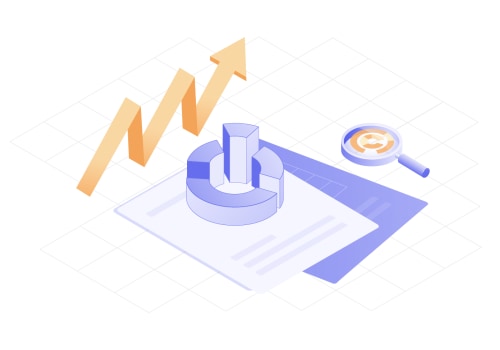Cost-benefit analysis is an essential tool for executives in making informed decisions. It provides a systematic approach to evaluating the potential costs and benefits of a project or investment, allowing leaders to make strategic decisions that align with the company's goals and objectives. With the constant pressure to maximize profits and minimize costs, cost-benefit analysis is crucial in determining the most efficient use of resources. In this article, we will delve into the importance of cost-benefit analysis in executive management and how it can provide valuable insights for leadership strategies and strategic decision making.
So let's dive in and explore the world of cost-benefit analysis. The first thing to understand about cost-benefit analysis is its purpose: to evaluate the potential costs and benefits of a particular decision or course of action. This can be applied to a wide range of situations, such as investment opportunities, project proposals, or even employee training programs. By taking a comprehensive look at all potential outcomes, executives can make more informed and strategic decisions that will benefit their organization in the long run. One key aspect of cost-benefit analysis is identifying all relevant costs and benefits. This includes not only financial factors, but also intangible aspects such as employee morale or brand reputation.
For example, when considering implementing a new technology, executives must not only consider the upfront costs but also the potential benefits such as increased efficiency and customer satisfaction. By taking a holistic approach, executives can get a better understanding of the true impact of their decisions. Another important element is risk assessment. Every decision involves some level of risk, and it is crucial for executives to understand these risks and weigh them against potential benefits. This is where cost-benefit analysis truly shines, as it allows leaders to identify and quantify risks in a structured manner.
By doing so, executives can make more confident decisions and mitigate potential negative consequences. Effective communication is also a crucial aspect of cost-benefit analysis in executive management. It is important for leaders to clearly and transparently communicate their thought process and rationale behind a decision to their team and stakeholders. This not only helps build trust and confidence, but also allows for valuable feedback and input from others. When it comes to professional development, cost-benefit analysis can also play a significant role. By evaluating the costs and benefits of various training programs or opportunities, executives can make informed decisions on which ones will provide the most value for their employees and company.
This not only benefits the individual's growth, but also contributes to the overall success of the organization. In conclusion, cost-benefit analysis is a powerful tool for executives to make strategic decisions that can greatly impact their company's success. By taking a comprehensive and structured approach, leaders can better understand the potential costs and benefits of their choices, mitigate risks, and communicate effectively with their team. It is an essential skill for any executive looking to improve their leadership and decision-making abilities.
Identifying Relevant Costs and Benefits
When it comes to making important decisions, leaders must take into account not only the potential benefits, but also the associated costs. This is where cost-benefit analysis plays a crucial role.By identifying all relevant costs and benefits, leaders can gain a comprehensive understanding of the true impact of a decision. Costs can include direct expenses such as materials and labor, as well as indirect costs like opportunity costs and time. On the other hand, benefits can range from increased revenue and profitability to improved customer satisfaction and employee morale. By considering all factors, leaders can make more informed choices that align with their company's goals and values. This also allows for better communication and transparency within the organization, as all stakeholders are aware of the reasoning behind a decision.
Assessing Risks
In order to make sound decisions, executives must not only consider the potential benefits of a decision, but also the risks involved. This is where cost-benefit analysis becomes crucial in executive management.By evaluating potential risks in a structured manner, leaders are able to identify and assess the potential consequences of their decisions. Through a cost-benefit analysis, executives can weigh the potential costs and benefits of different options before making a final decision. This allows them to prioritize and mitigate potential risks, ultimately leading to more effective and successful outcomes. Furthermore, by utilizing cost-benefit analysis, leaders are able to consider both short-term and long-term impacts of their decisions. This allows them to make strategic decisions that not only benefit the company in the present, but also in the future.
Professional Development
In today's competitive business environment, employee growth and development are crucial for a company's success. As an executive, it is important to not only focus on the bottom line, but also invest in the professional development of your employees.This is where cost-benefit analysis comes into play. By utilizing cost-benefit analysis, executives can make informed decisions on how to allocate resources for employee growth. This can include investments in training programs, workshops, and other development opportunities. By weighing the costs and benefits of these initiatives, leaders can ensure that their company is making the most effective use of their resources. Additionally, cost-benefit analysis can also be used to determine the return on investment for employee development. By evaluating the costs of implementing these programs against the potential benefits, executives can measure the impact and effectiveness of their investments.
This allows for better decision-making in terms of future employee development strategies. Furthermore, cost-benefit analysis can also aid in identifying areas where employees may need additional support or training. By analyzing the costs and benefits of different training programs, executives can pinpoint areas where employees may be lacking in skills or knowledge. This allows for targeted development plans that can ultimately lead to improved performance and overall company success. In conclusion, professional development is crucial for both employee growth and company success. Utilizing cost-benefit analysis in this aspect of executive management provides valuable insights and guidance, ensuring that resources are allocated effectively and efficiently for the benefit of all parties involved.
Effective Communication
Effective communication is a crucial aspect of utilizing cost-benefit analysis in executive management.As leaders, it is important to build trust and gather feedback through transparent communication. This not only helps in making informed decisions, but also ensures that the entire team is on the same page and understands the rationale behind certain choices. Transparent communication involves being open and honest about the analysis process and its results. This helps in building trust with stakeholders and encourages them to provide valuable feedback.
It also allows for a more collaborative decision-making process, where different perspectives can be considered. Furthermore, effective communication also involves clearly communicating the costs and benefits of each option to stakeholders. This helps in managing expectations and avoiding any misunderstandings or conflicts. In addition, through transparent communication, leaders can gather feedback from all stakeholders involved in the decision-making process.
This feedback can provide valuable insights and help in identifying any potential risks or opportunities that may have been overlooked. Transparent communication also plays a crucial role in professional development. By openly discussing the cost-benefit analysis process and its outcomes, leaders can help their team members understand the reasoning behind certain decisions and improve their own decision-making skills. In conclusion, effective communication is essential in utilizing cost-benefit analysis in executive management.
It promotes transparency, builds trust, gathers feedback, manages expectations, and aids in professional development. By incorporating effective communication strategies into their leadership strategies, executives can make more informed decisions that positively impact their company's success. Cost-benefit analysis is a valuable tool for executives to make well-informed decisions that can greatly benefit their organization. By understanding its purpose, identifying relevant costs and benefits, assessing risks, and utilizing effective communication, leaders can make strategic choices that contribute to their company's success.







Leave a Comment